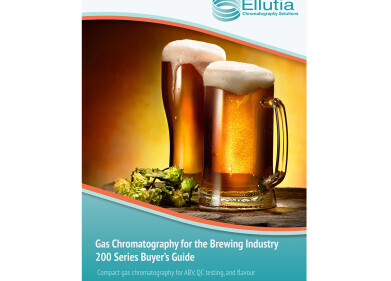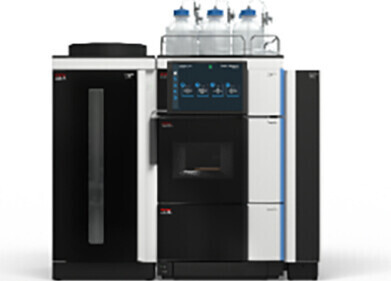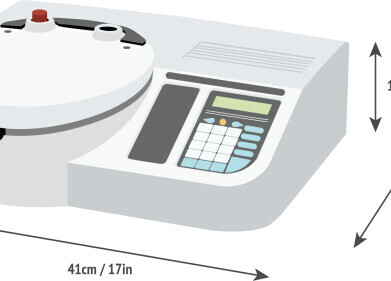-
 Reproducibility of a 1 ppb standard.
Reproducibility of a 1 ppb standard. -
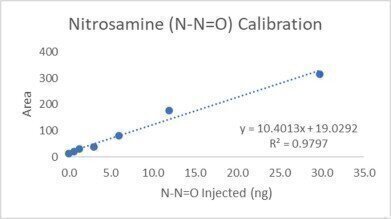 Determination of Total nitrosamine content down to 1ppb.
Determination of Total nitrosamine content down to 1ppb. -
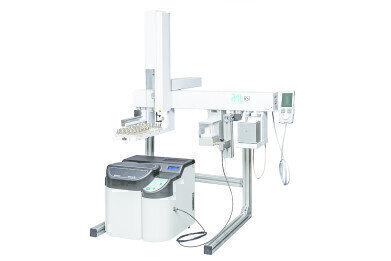 The Ellutia 800 Series TEA.
The Ellutia 800 Series TEA. -
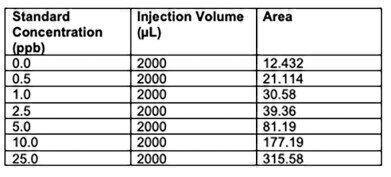 Results of calibration of standards from 0-25 ppb.
Results of calibration of standards from 0-25 ppb. -
 Reproducibility of 1ppb standard.
Reproducibility of 1ppb standard.
Chromatography
Automating Total Nitrosamine Analysis
Oct 11 2022
Nitrosamines are known carcinogens and require monitoring down to extremely low levels. They are found in various industries, from food and drink to cosmetics, rubber products, and agrochemicals. Recently there has been a spotlight on the pharmaceutical industry because of a number of high-profile product recalls due to unsafe levels of nitrosamine content in specific product lines. These recent cases have shown that nitrosamines can form in the final products themselves. This means that Drug manufacturers now have to look not only at the finished products but at the ingredients and processes used in the manufacture.
This has led to a bottleneck where there is now an enormous number of samples in many different forms, all of which need to be screened for potential nitrosamine content. Typically, the analysis is carried out using a mass spec detector interfaced with a GC or HPLC system. Ellutia has been working with several companies who have found that this approach does not yield the desired results. The cost of the equipment to reach the detection limits, the different methods, and the sheer quantity of samples requiring testing have meant they have struggled to resource the issue. Even when they have been testing, they have found it difficult to reach the low limits of detection required and have been experiencing problems with potential false positives.
Ellutia has developed a unique automated solution for rapidly analysing nitrosamine content to low ppb levels. The system simplifies and speeds up the testing process, allowing users to rapidly screen for total nitrosamine content and ensure safety compliance.
The system is designed around the Ellutia 800 Series TEA, a nitro chemiluminescence detector whose combination of selectivity and sensitivity for nitro compounds makes it the perfect detector for nitrosamine analysis.
The TEA detector is more commonly known as a GC detector. When used with GC, the volatile nitrosamines are separated in the GC column, and then a pyrolyser is used to break the bond and release the NO group from a nitrosamine. The carrier gas then sweeps the NO molecules that have been released to a reaction chamber, where they react with ozone under a vacuum. This reaction creates NO in an excited state, which emits a photon of light that is measured as it decays.
The Automated total nitrosamine analysis system uses a chemical reaction to break the NO group from the nitrosamine rather than the heat of a pyrolyser. This means that volatile and non-volatile nitrosamines undergo the reaction simultaneously, so a single result is generated for the total concentration of all nitrosamines present. This allows much more rapid screening of samples for nitrosamine content and also reduces the possibility of missing potential nitrosamine contamination by only looking for a few specific compounds.
Depending upon the type of sample, it can be either placed directly into the vial or undergo an extraction into a solvent and then placed into a vial. The Reagent mix is added to the samples, and the vials are sealed. The sealed vials can then undergo an optimised reaction on the autosampler. Once the reaction has been completed, the headspace in the vial can be sampled and injected into the system, where it is swept to the TEA by a carrier gas flow.
The system can determine Total nitrosamine content down to 1ppb. A calibration of Nitrosamine Standards from 0-25ppb (Table 1 & Figure 1). The reproducibility of a 1 ppb standard is shown in Figure 2.
Table 1: Results of calibration of standards from 0-25 ppb.
The system can be used to test almost all types of samples. It has been used to test tablets, solvents, and shampoos. Once loaded with samples, the initial sample preparation is completed system can deliver a result every 6 minutes. Suppose a sample has been identified as containing a total nitrosamine content above regulatory values. In that case, it can then be further analysed by a speciated method to determine the exact makeup of the nitrosamines present. This approach dramatically helps alleviate the bottleneck by ensuring that only samples positive for nitrosamines take up valuable time on systems performing complete speciated analysis.
Visit the Ellutia website to learn more about how this system can help you solve your nitrosamine analysis problems.
More information online
Digital Edition
Lab Asia Dec 2025
December 2025
Chromatography Articles- Cutting-edge sample preparation tools help laboratories to stay ahead of the curveMass Spectrometry & Spectroscopy Articles- Unlocking the complexity of metabolomics: Pushi...
View all digital editions
Events
Jan 21 2026 Tokyo, Japan
Jan 28 2026 Tokyo, Japan
Jan 29 2026 New Delhi, India
Feb 07 2026 Boston, MA, USA
Asia Pharma Expo/Asia Lab Expo
Feb 12 2026 Dhaka, Bangladesh
